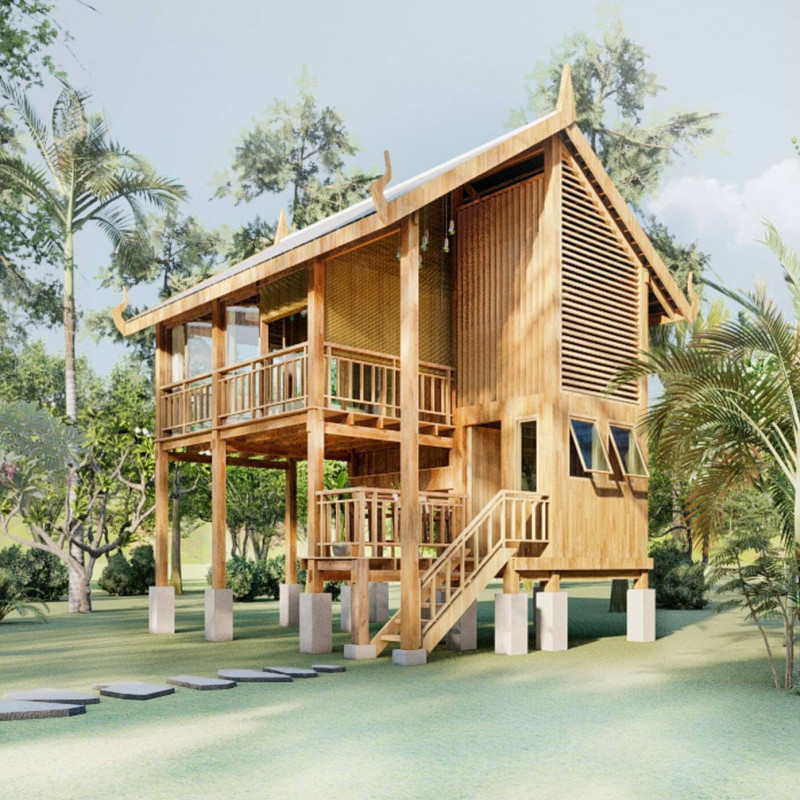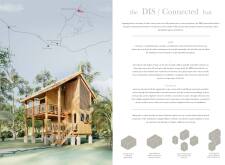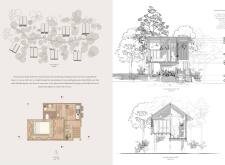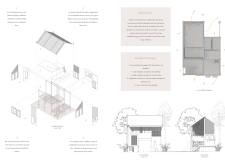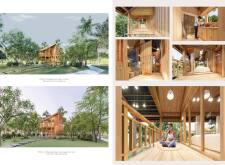5 key facts about this project
The DIS/Connected Hut presents a new approach to retreat design, situated in a quiet natural environment. It encourages people to step away from the demands of busy urban life, allowing them to focus on personal reflection and build connections with others. The concept explores the balance between solitude and community through flexible spaces that adapt to the needs and desires of its users.
Spatial Configuration
The layout draws inspiration from traditional Khmer homes, reinterpreting their forms in a way that meets modern needs. Different sections of the hut are arranged thoughtfully, creating a blend of private and communal areas. This arrangement allows visitors to navigate between quiet corners for contemplation and open spaces for social interaction, making the experience feel diverse and dynamic.
Connection to Nature
The design emphasizes a strong relationship with the outside world. Large openings in the structure let natural light and fresh air flow in, making the interior feel more connected to its surroundings. By engaging with nature, occupants are encouraged to appreciate their environment, which enhances their overall retreat experience. The natural setting becomes an integral part of the daily rhythm within the hut.
Landscaping Elements
Landscaping plays an important role in the overall design. Local plants, including Romdoul, Champey, and Sarika flowers, have been carefully chosen to enhance the scenery. This greenery helps create a sense of privacy while still allowing for connection among visitors. The way the landscape is arranged adds to the structure, providing a soothing visual experience that respects the local ecosystem.
Environmental Strategies
Architectural choices have been made to support comfort and sustainability. Cross ventilation allows for fresh air circulation, while vertical openings in the roof support stack ventilation. Features like adjustable louvres help control sunlight and heat, adjusting the interior environment to various weather conditions.
Timber, a common material in Cambodian building practices, reinforces the cultural significance of the design. Its use grounds the hut in the local context, and reflects a focus on sustainability. The combination of these elements creates an inviting retreat atmosphere, encouraging individuals to reconnect with themselves and their surroundings in a meaningful way.


